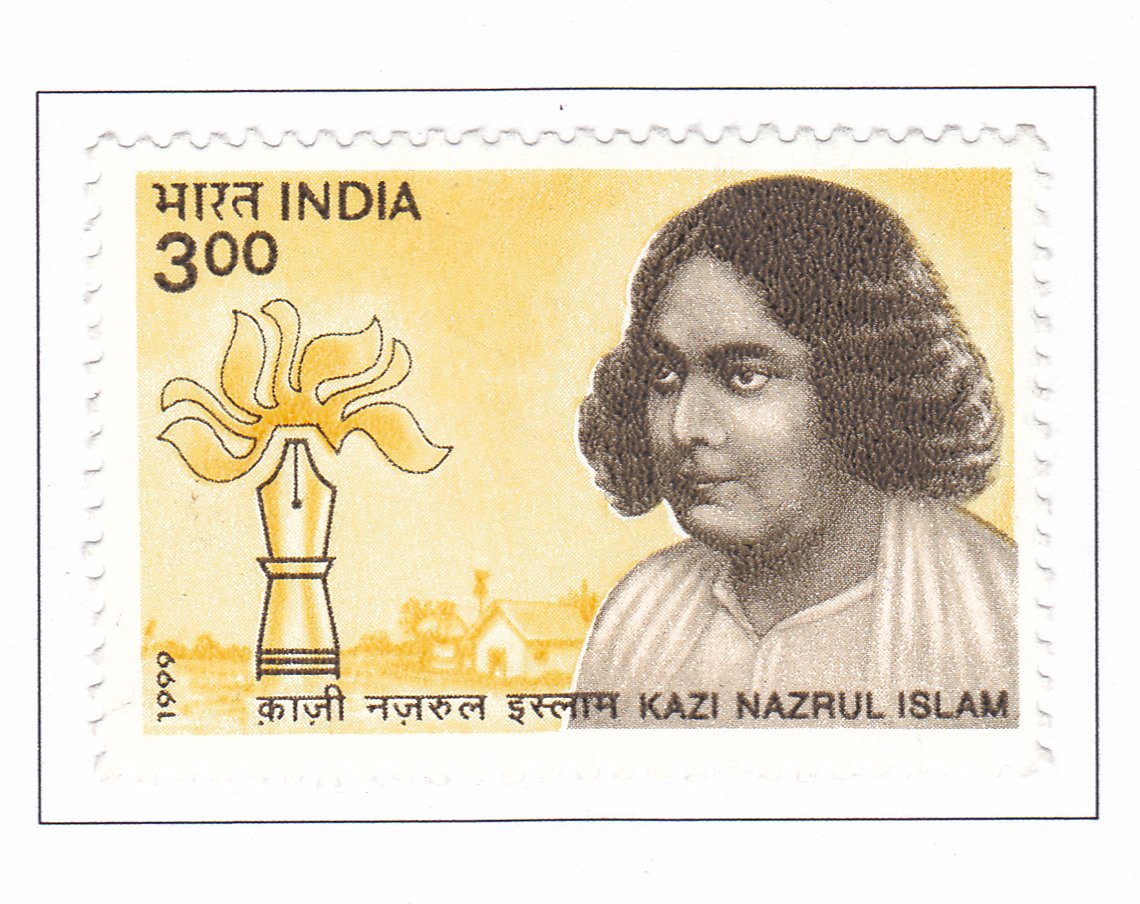Linguistic Harmony Of India – Kazi Nazrul Islam (1899-1976)

Technical Data
| Stamp Set | Birth Centenary Linguistic Harmony Of India |
|---|---|
| Date of Issue | September 14, 1999 |
| Denomination | Rs. 3 |
| Perforation | comb 13 |
| Printer | Security Printing Press, Nashik |
| Watermark | No Watermark |
| Colors | Multicolor |
| Catalog Codes |
Michel IN 1699 Stamp Number IN 1760 Yvert et Tellier IN 1466 Stanley Gibbons IN 1865 |
| Themes | Anniversaries and Jubilees | Authors | Famous people | Literary People (Poets and Writers) | Literature | Men |
Table of Contents
Kazi Nazrul Islam and Linguistic Harmony in India
Kazi Nazrul Islam (1899–1976), known as the Rebel Poet, holds a special place in the annals of Indian and Bengali literature. His work stands as a symbol of linguistic and cultural harmony, transcending the barriers of language, religion, and nationality. A versatile genius, Nazrul was a poet, musician, and revolutionary whose writings reflected a deep commitment to justice, equality, and unity. His contribution to India’s linguistic harmony is evident in his celebration of diversity, advocacy for communal unity, and literary works that drew from multiple linguistic traditions.
Early Life and Literary Career
Born in Churulia, West Bengal in 1899, Nazrul grew up in a multilingual environment that exposed him to both Bengali and Persian languages, as well as Sanskritic and Islamic traditions. His upbringing in such a diverse cultural landscape shaped his literary career. Nazrul began writing at a young age, and his works quickly gained recognition for their revolutionary spirit and powerful social messages.
Advocate for Unity in Diversity
Nazrul believed in linguistic unity and promoted secularism through his writings. He envisioned a harmonious society where people of different faiths, languages, and cultures could coexist peacefully. His works, particularly his songs and poetry, celebrated both Hindu and Islamic traditions, blending Sanskritic and Arabic influences with ease. He famously wrote devotional songs for both religions, including Shyama Sangeet (songs dedicated to the Hindu goddess Kali) and Hamd/Naat (Islamic religious hymns).
One of his most famous songs, “Vidrohi” (The Rebel), reflected his defiance against oppression and his call for unity. He drew inspiration from a range of religious and literary sources, often quoting from the Vedas, Quran, Upanishads, and Hadith. His fusion of Bengali, Arabic, Persian, and Urdu vocabulary in his works symbolized the linguistic unity of India, embodying the ethos of the country’s pluralistic society.
Linguistic Contributions
Nazrul’s contributions to linguistic harmony were not limited to literary works but extended to his role as a composer and musician. He created a vast body of music known as Nazrul Geeti (Songs of Nazrul), which blended different linguistic traditions. These songs, written in Bengali, incorporated words and musical elements from Hindustani, Persian, and Arabic traditions, symbolizing his belief in cultural unity.
His poems and songs also played a pivotal role in India’s freedom movement, fostering unity among people from diverse linguistic backgrounds. His vision of a linguistically and culturally harmonious India resonated with leaders of the time, including Rabindranath Tagore, who admired Nazrul’s ability to cross linguistic and religious boundaries through his works.
Legacy of Linguistic Harmony
Nazrul’s message of linguistic and cultural harmony continues to resonate in India and Bangladesh, where he is celebrated as the national poet. His works remain a source of inspiration for generations, promoting the idea that diversity is India’s strength. His life and literary contributions underscore the importance of mutual respect and understanding between different linguistic communities, reinforcing the notion of India as a land of unity in diversity.
The Department of Posts has honored Kazi Nazrul Islam by issuing commemorative stamps, recognizing his contributions to literature and his efforts to promote linguistic and communal harmony. His work serves as a reminder of the unifying power of language and culture in building a more inclusive and harmonious society.
